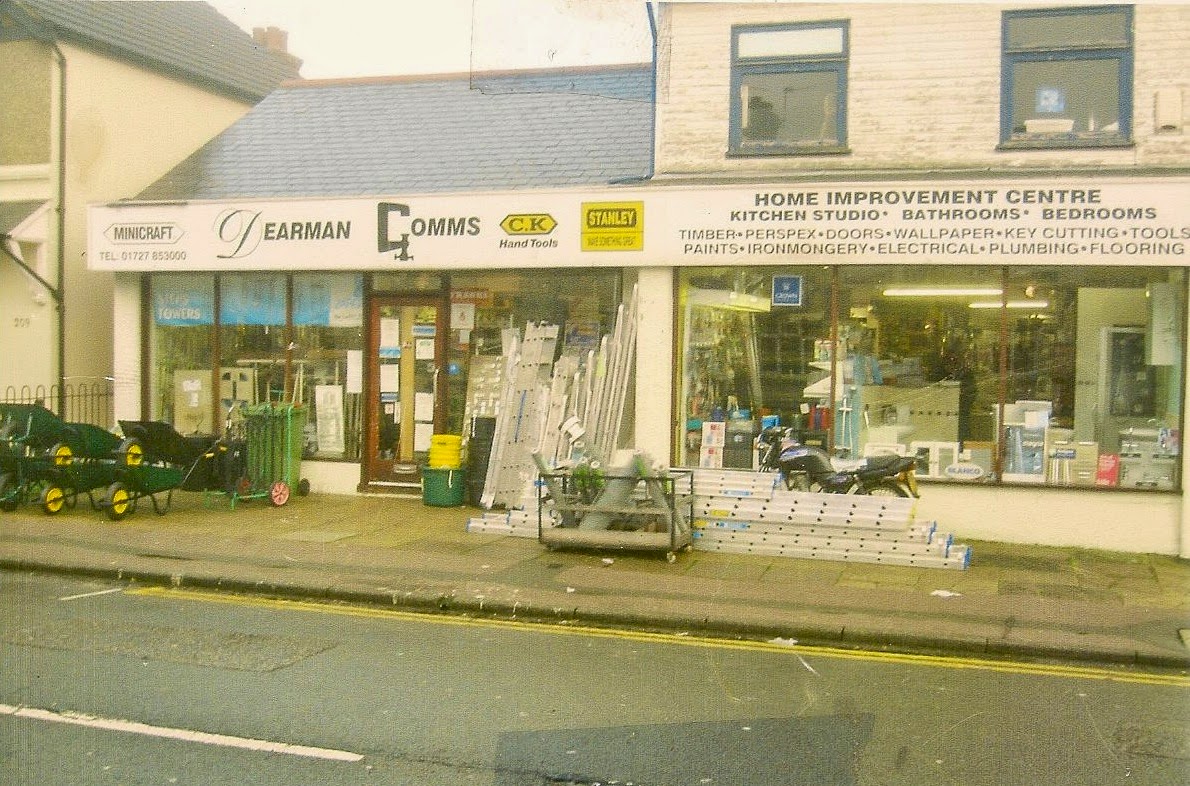However, you could stand at the north side of the junction of Hatfield Road with Sutton Road, with your back to the track beside The Emporium. The view takes in the entire length (parked vehicles permitting) of Sutton Road as far as Camp View Road.
Here is, or was, the entire history of Fleetville before even that name was applied. Before even that earlier sobriquet for the old turnpike toll house: "the Rats' Castle", now applied to the public house.
On your left was the former Beaumonts Farm stretching ahead as far as Camp Road; on your right, where Morrison's is now, cows grazed in a field owned by St Albans School. Carts loaded with goods for the market would occasionally trundle down the farm track to reach the Hatfield turnpike road and turn towards St Albans right in front of you. That was the reason for the toll house in the first place!
In earlier times your feet would undoubtedly be extremely wet from the stream which flowed from behind you along the Emporium track, straight along the farm track (Sutton Road) before veering to the right roughly where Campfield Road is.
In the mid 19th century a branch railway steamed its way across the scene en-route between London Road and Hatfield, with a low and very narrow bridge carrying the railway track over the cart track. The route is now Alban Way.
Immediately to the right of you was built a terrace of homes for the printer employees – Arthur Road; and the corner building on that road was an institute for the recreation of those same men.
Immediately to the left, before the display windows of the Emporium, is still the cottage occupied by Mrs Turner in around 1905. Oh, and the track behind us was well used by carters and horse owners visiting the farrier who had set up a forge at the far end.
Other than at Arthur Road, there was not much other evidence of houses although the homes along Hatfield Road to our left gradually appeared during the next two decades. But beyond the railway and opposite Beaumont House gather groups and teams on Twelve Acre Field to play football. That was before today's Rec.
We have seen all of this – and had to imagine some of it – without walking a single step. So I think it is fair to say this small patch of pavement is a view point (or viewpoint).





